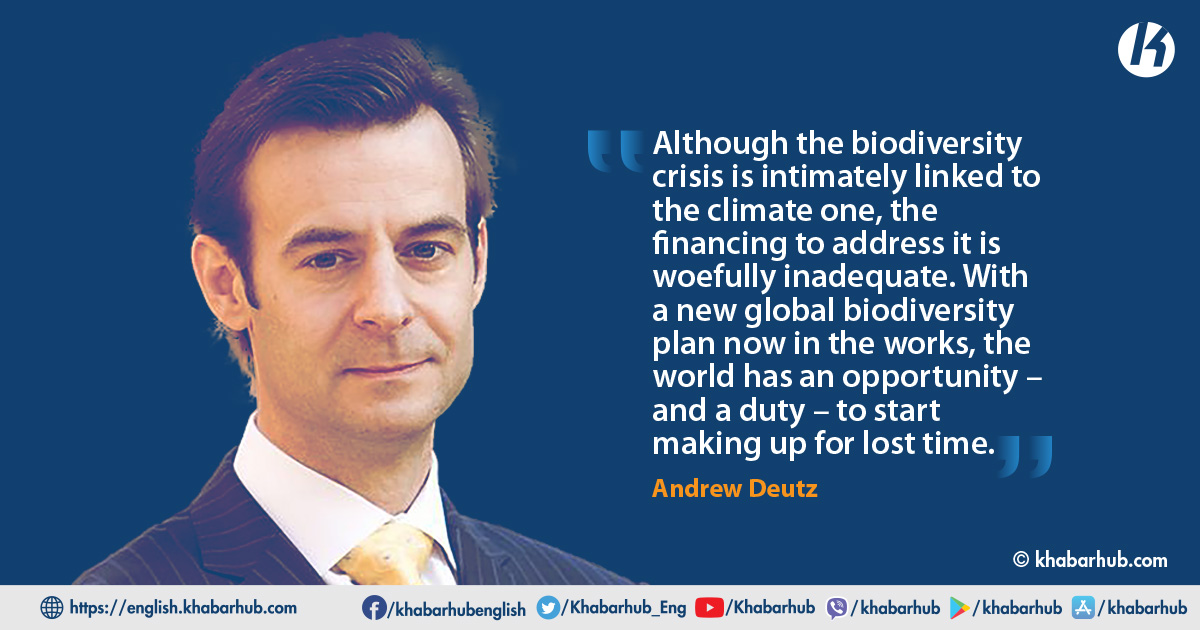If you want to understand policy choices, it is said, “follow the money.” Inspired by that advice, we at The Nature Conservancy (in partnership with the Paulson Institute and the Cornell Atkinson Center for Sustainability) crunched the numbers to see what it would cost to preserve biodiversity – the variety and abundance of life on earth.
We found that while the world spends $124-143 billion per year (as of 2019) on economic activity that benefits nature, it spends much more on activities that damage it. Moreover, to protect and then begin to restore nature, we urgently need to close a $598-824 billion annual financing gap.
This gap has had devastating consequences. By the start of this decade, the world had failed to achieve a single day one of the 2010 Aichi Targets, the world’s blueprint for biodiversity conservation.
Now, another plan is in the works. Over the past two years, scientists and government officials have been drafting a new global framework of targets for managing nature through 2030, to be adopted at the next conference of the United Nations Convention on Biological Diversity (CBD COP15) in Kunming, China, the first part of which is now scheduled for this October.
The CBD framework, like that of the 2015 Paris climate agreement, will signal government ambition, set clear priorities for action, and indicate what the private sector needs to do to support global targets.
Our research shows, however, that stopping the biodiversity crisis will require backing these ambitious new targets with equally ambitious financing plans.
Protecting and restoring natural ecosystems not only preserves biodiversity but also helps to absorb greenhouse gases and build resilience against the effects of climate change. The biodiversity crisis is intimately linked to the climate crisis.
To that end, our report recommends various ways to find the money needed to rebuild an economy that supports nature.
The financing gap must be closed from both ends – by reducing financial need and increasing financial flows.
First, we must cease or redirect economic activity that actively harms nature. While governments around the world provide approximately $530 billion per year in subsidies and price supports for farmers, only 15% of these incentives support sustainable outcomes.
Worse, most of them may lead to the overuse of fertilizers or land conversion (among many other perverse effects that degrade nature).
Second, we must be more creative about how we generate new funding to protect and restore nature. We also need better regulation to ensure that there is no net loss of nature.
As we build the new infrastructure for a low-carbon economy, we must avoid damaging nature as much as possible, and compensate for truly unavoidable effects by restoring or protecting ecosystems elsewhere.
Within the private sector, there is ample room for growth in green finance tools such as environmental-impact bonds and low-interest green loans that fund biodiversity-enhancing initiatives.
But to realize this potential, governments must create the right conditions for greater private investment by developing and enforcing mechanisms that require industries to value nature in their operations and throughout their supply chains.
Finally, we must deploy our current spending more efficiently. Coral reefs, forests, wetlands, and other ecosystems provide healthy, sustainable habitats while also furnishing communities with natural water-management and coastal-protection services.
This “natural infrastructure” is sometimes even more cost-effective than engineered “gray” solutions like dams and floodwalls.
Protecting and restoring natural ecosystems not only preserves biodiversity but also helps to absorb greenhouse gases and build resilience against the effects of climate change. The biodiversity crisis is intimately linked to the climate crisis.
Natural climate solutions (conservation, restoration, and better ecosystem management) have the potential to cover one-third of the annual emissions reductions needed to keep global warming well below 2° Celsius.
The first draft of the new global biodiversity action plan emphasizes the importance of closing the $700 billion annual financing gap by 2030.
Developing countries will need financial help. This can be provided by doubling foreign aid flows by the middle of this decade (something that donor countries actually succeeded in doing in the 2010s), and by allocating up to 30% of climate aid for nature-based solutions, as countries like France and the United Kingdom have already done.
It calls for a $500 billion reduction in harmful financial flows across sectors, and for a mobilization of $200 billion more per year in positive financial flows.
These financial targets are a necessary counterpart to targets for sectoral sustainability, where the critical areas are agriculture, infrastructure, and financial services.
Target 15 of the action plan asks all businesses to “assess and report on their dependencies and impacts on biodiversity, and progressively reduce negative impacts by at least half and increase positive impacts.”
Moreover, G7 finance ministers have endorsed the new Taskforce on Nature-related Financial Disclosures, which has prompted many big financial firms to strengthen their reporting on their assets’ impacts on biodiversity (similar to already-mandated climate reporting).
These are all steps in the right direction, but mainstream financial flows need to become fully aligned with nature-positive outcomes, as is already happening with respect to decarbonization.
To convert aspiration into implementation, the new biodiversity framework should require countries to develop national biodiversity finance plans that will identify and then close national funding gaps, align all public and private financial flows, and assist with similar efforts beyond their borders when they can.
These policy reforms and their associated budgets will need to include specific allocations for indigenous and local communities that contribute to the conservation of biodiversity.
Developing countries will need financial help. This can be provided by doubling foreign aid flows by the middle of this decade (something that donor countries actually succeeded in doing in the 2010s), and by allocating up to 30% of climate aid for nature-based solutions, as countries like France and the United Kingdom have already done.
Finally, action on the home front is critical. We need countries to spend more domestically to reduce their emissions, build resilience, protect biodiversity, and spend less overall on activities that harm nature and the climate.
Following the money is no longer enough. We must take an active hand in redirecting it.
(Andrew Deutz is Director of Global Policy, Institutions and Conservation Finance at The Nature Conservancy)
Copyright: Project Syndicate









Comment